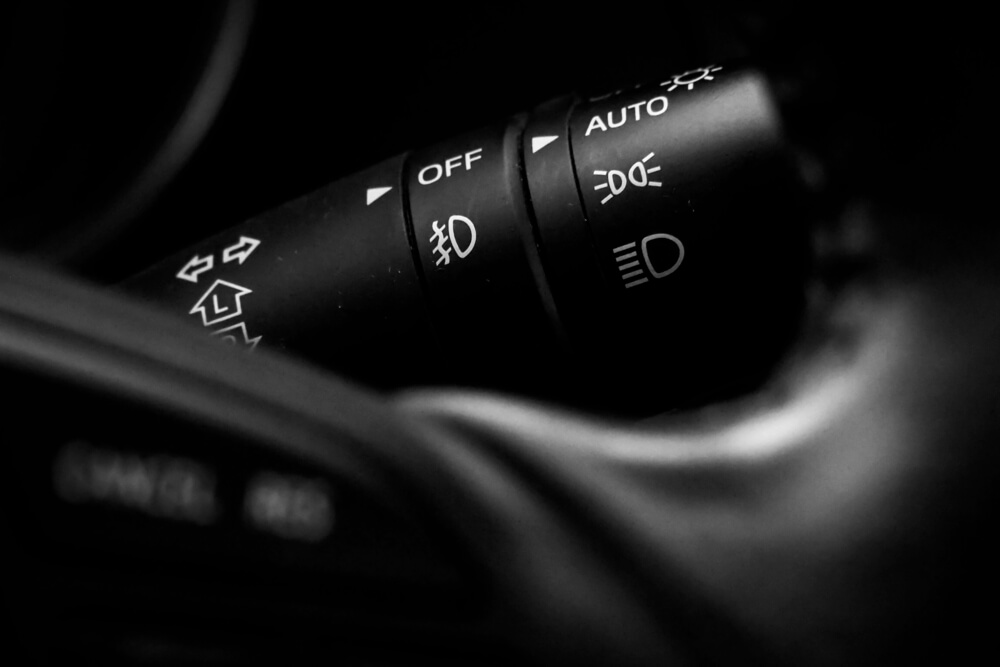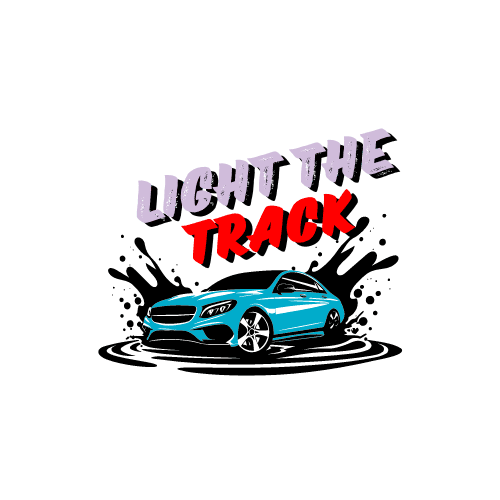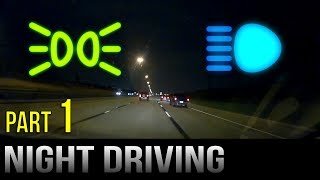At night, you should use low beam headlights or dipped headlights for optimal visibility and safety. Low beams are essential for driving at night and can also improve visibility during adverse weather conditions and at dawn and dusk.
It’s important to use the right type of headlights to ensure clear, bright light without causing glare to other drivers. LED headlights are recommended for nighttime driving as they provide a bright light without blinding oncoming drivers. Using the appropriate headlights not only enhances your own visibility but also contributes to overall road safety.
By understanding the best headlights to use at night, you can effectively navigate nighttime driving conditions with confidence.
Choosing The Right Headlights For Night Driving
When driving at night, it’s important to have the proper headlights to ensure your safety and the safety of others on the road. There are several types of headlights to choose from, including daytime running lights, low beams, high beams, LED headlights, and more. It’s crucial to know which headlights to use in different situations, such as during adverse weather conditions, just after sunrise, or just before sunset.
Using the correct headlights can also help prevent headlight glare, which can be distracting and dangerous for other drivers on the road. LED headlights are often considered the best option for nighttime driving, as they provide a clear and bright light that illuminates the road ahead.
Remember to always turn on your headlights when driving at night, and use the appropriate headlights depending on the situation. By doing so, you can help keep yourself and others safe on the road.
Credit: weberautomotive.com
Understanding Low Beam Headlights
Low beam headlights, also known as dipped headlights, are an important component of a vehicle’s lighting system. They provide adequate illumination for driving at night and in adverse weather conditions, ensuring safety on the road.
When to Use Low Beams:
- During nighttime driving to improve visibility without causing glare to oncoming drivers.
- In foggy, rainy, or snowy conditions to enhance visibility.
- Just after sunrise and just before sunset when natural light is low.
- In areas with street lighting to ensure visibility of road signs and pedestrians.
Safety Benefits of Low Beams:
Low beam headlights offer several safety benefits, including:
- Improved visibility of the road ahead, allowing drivers to detect obstacles and hazards in a timely manner.
- Enhanced visibility for other road users, making it easier for them to see your vehicle and react accordingly.
- Reduced glare for oncoming drivers, preventing temporary blindness and potential accidents.
- Increased visibility during inclement weather, reducing the risk of collisions.
Overall, understanding when and how to use low beam headlights is crucial for safe driving, ensuring the well-being of both drivers and pedestrians on the road.
High Beam Headlights Explained
At night, it’s best to use low beam headlights for improved visibility and safety. These are essential for driving in the dark and also prove beneficial during adverse weather conditions and at dawn or dusk. Additionally, LED headlights are recommended for nighttime driving due to their clear, bright light without glare, ensuring the safety of other drivers on the road.
| High beams provide maximum visibility on unlit roads. |
| Use high beams when no other cars are around. |
| Avoid using high beams in foggy conditions to prevent glare. |

Credit: m.youtube.com
Led Headlights: A Brighter Choice
LED headlights are becoming a popular choice for drivers looking for a brighter option when it comes to night driving. There are several advantages to using LED headlights, one of which is the reduction of glare. LED technology allows for precise control of the light beam, minimizing the amount of light that scatters and causes glare for oncoming drivers.
In addition to reducing glare, LED headlights offer other benefits as well. They provide a clearer and brighter light output, allowing drivers to see the road ahead more clearly. LED headlights also have a longer lifespan compared to traditional halogen bulbs, making them a cost-effective choice in the long run.
Furthermore, LED headlights are more energy-efficient, consuming less power from the vehicle’s battery. This can help improve fuel efficiency and reduce the strain on the electrical system.
Overall, LED headlights provide a safer and more efficient option for night driving, ensuring better visibility and reducing the risk of accidents.
Daytime Running Lights And Their Role
When driving at night, it is important to use the appropriate headlights to ensure safety on the road. Daytime Running Lights (DRLs) are designed to provide additional visibility during the day, but they may not be suitable for use during the twilight hours. Legal requirements for DRLs vary by location, so it is important to check the regulations in your area. Low beam headlights are essential when driving at night, and they can also improve visibility during adverse weather conditions or at dawn and dusk. High beam headlights can be used to increase visibility on dark roads with no oncoming traffic, but they should be dimmed when other vehicles are present to avoid headlight glare. LED headlights are a popular choice for nighttime driving due to their clear, bright light without glare.
Fog Lights: Cutting Through Darkness
Fog lights are essential for cutting through darkness and improving visibility. When used correctly, they can make a significant difference in your ability to see and be seen on the road. By emitting a low, wide beam of light, fog lights can help illuminate the road ahead in foggy, misty, or snowy conditions, as well as on dark, moonless nights. This improved visibility can reduce the risk of accidents and provide a safer driving experience for you and other road users. It’s important to use fog lights responsibly, ensuring they are switched off when not needed to avoid blinding other drivers. When installed and used correctly, fog lights are a valuable tool for enhancing nighttime visibility and safety.
Headlight Intensity And Adjustment
Proper headlight intensity and adjustment are crucial for safe night driving. It is recommended to use low beam headlights or dipped headlights, especially during adverse weather conditions like rain, snow, sleet, or fog. LED headlights are the best option for nighttime driving, as they provide clear and bright light without causing glare for other drivers.
| Headlight Intensity and Adjustment |
| Setting Your Headlight Beam Correctly can enhance visibility on the road. |
| Avoid over-illumination to prevent blinding other drivers and ensure safe driving conditions. |
Adapting To Different Driving Conditions
When driving at night, it is important to use low beam headlights or dipped headlights. These headlights not only improve visibility and safety during nighttime driving, but they are also beneficial in adverse weather conditions or during dawn and dusk.
LED headlights are recommended for the best nighttime driving experience, as they provide clear and bright light without causing glare for other drivers on the road.
| Adapting to Different Driving Conditions |
| Switching between headlight types is crucial for safety. |
| Weather and traffic dictate the best headlight choice. |
| Low beam headlights are ideal for night driving. |
| LED headlights offer optimal visibility at night. |
Maintaining And Upgrading Your Headlights
|
Maintaining your headlights is crucial for optimal performance. Ensure regular maintenance to enhance visibility at night. Consider upgrading to LED headlights for improved safety and brightness. |
Headlight Etiquette For Safe Night Driving
|
Using appropriate headlights is crucial for safe night driving. |
|
Low beam headlights are ideal for nighttime visibility without causing glare to other drivers. |
|
Avoid using high beams when other vehicles are present to prevent blinding them. |
|
Understanding headlight etiquette is essential for sharing the road responsibly at night. |
|
LED headlights are recommended for night driving due to their clarity and brightness. |

Credit: driving-tests.org
Frequently Asked Questions
What Headlights Should Be On At Night?
At night, use low beam headlights for better visibility and safety, even in adverse weather conditions. Consider LED headlights for clear, bright light without glare, ideal for nighttime driving. Remember to be visible by using main headlights if unsure.
Which Lights Do I Use To Drive At Night?
To drive at night, you should use low beam headlights or dipped headlights. These headlights are essential for visibility and safety during nighttime driving. They can also be used during the day in adverse weather conditions or during dawn and dusk.
LED headlights are recommended for the best nighttime driving experience as they provide clear and bright light without causing glare to other drivers.
What Are The Best Headlights For Night Driving?
LED headlights are the best option for night driving. They provide clear and bright light without glare, ensuring that you won’t blind other drivers on the road. Low beam or dipped headlights are also essential for safe driving at night and during adverse weather conditions.
Avoid using high beams when other vehicles are present as they can cause headlight glare.
What Number Should My Headlights Be On?
For nighttime driving, use low beam headlights or dipped headlights. They improve visibility and safety, especially in adverse weather conditions. Avoid high beams to prevent blinding other drivers. LED headlights are recommended for the clearest, glare-free illumination.
What Are The Best Headlights For Night Driving?
LED headlights are best for nighttime driving, emitting clear, bright light without glare.
Which Car Lights Should Be On At Night?
Low beam headlights are essential for driving at night, improving visibility and safety.
When Should High Beam Headlights Be Used?
High beam headlights should be used when driving in dark, rural areas with no oncoming traffic.
Conclusion
To ensure optimal visibility and safety at night, it is important to use the appropriate headlights. Low beam headlights, also known as dipped headlights, are essential for nighttime driving. They not only improve visibility during the dark hours but also provide increased safety in adverse weather conditions such as rain, snow, or fog.
Additionally, LED headlights are recommended for their clear and bright light output without causing glare for oncoming drivers. By using the right headlights, you can enhance your driving experience and ensure the safety of yourself and others on the road.


Leave a Reply